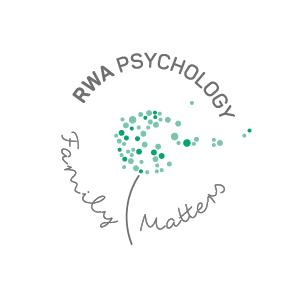Transitions are a normal part of our everyday lives and take up a significant proportion of our day. For a lot of people transitions occur naturally and without much difficulty, but for neurodiverse children with autism spectrum disorder (ASD), and other developmental disorders such as attention deficit hyperactivity disorder (ADHD), transitions can be challenging. The transition strategies in this post have been written with neurodiverse children in mind, however may also be useful for neurotypical children also, supporting them to progress more smoothly through the transitions in their day.
A transition may be defined as any disruption to an activity that requires you to adapt. For children, one of the big daily transitions is when they go from home to school. Tied up in the larger transitions are a great many smaller transitions; at school and at home children are frequently asked to stop and start activities and move from one location to another. Over time and without the appropriate support, this can limit independence and impede positive participation in activities and relationships.
Why are transitions difficult?
There are a number of reasons that transitions may be difficult. neurodiverse and neurotypical children alike may engage in behaviours in order to avoid activities that are less desirable, in favour of a preferred activity. They may also experience the attention from others during a transition to be desirable and reinforcing. Additionally, transition difficulties may be greater for children with ASD due to their higher need for predictability, and difficulty adjusting when a performed patterned behaviour is disrupted (e.g. performing a task in a certain manner or sequence). Neurodiverse children may also have difficulty understanding verbal direction or explanations given by their parent/caregiver or teacher. This is exacerbated when the instruction contains multiple steps. Neurodiverse children often struggle to recognise the relationship between steps of an activity and miss cues leading up to a transition (e.g. peers packing away task materials) leaving them unprepared when the transition occurs. This in turn can feed the child’s anxiety, and impact their behaviour.
Neurodiverse children benefit from support before, during and after a transition, and the below goals and strategies have been developed with this in mind.
Transition goals:
- Increasing positive participation at school, home and in the community
- Increasing age-appropriate independence and reducing reliance on prompts from adults
- Reduce amount of transition time needed
- Increasing desired behaviour during transitions
Transition strategies
Transition strategies are a specific set of techniques that can be used to support children with ASD throughout the day, before, during and after a transition between routines, settings or activities. These strategies use visual, verbal and auditory cues, building positive transition routines and increasing predictability for the child.
Pre-transition
Preparing a child with ASD ahead of a transition can be incredibly effective in supporting a positive transition. Sometimes, a brief verbal cue is sufficient e.g. “it’s group reading time now”, but often it will not be effective. When deciding if a verbal cue is appropriate, consider if the child is able to process verbal information in their current setting or environment (e.g. a noisy classroom), and if the child has had sufficient time to shift their attention from the task they were doing. Children with ASD benefit from having extra time to prepare for a transition, and from support to attend to non-verbal cues. Non-verbal cues that help children prepare for a transition;
- A visual timer
Using a visual timer will help the child to visualise the time remaining before the transition. Verbal representations of time without a concrete visual cue are often too abstract for children, particularly neurodiverse children. Examples of apps that incorporate visual timers include Brili Routines, Time Timer and Visual Countdown Timer.
- Visual schedule
A visual schedule can support the child to have a successful transition by increasing predictability for them by supporting them to view a representation of the upcoming activity, and gain an understanding of the sequence of activities that will occur. It is important that visual schedules are easily accessible/visible and understood by the child. This can help with increasing independence for the child and decreasing challenging behaviours around transition times.
- Other visual cues
Other specific visual cues such as pictures, photos, written words and transition objects can be helpful, signalling to the child that the transition is upcoming. An example of this may be the teacher giving the child a picture of the library, a photo of the reading area in the library, a card with ‘Library’ written on it, or a book that the child connects with the library.
‘First, Then’ cards are another useful visual tool to cue a transition, and can be used when the child is struggling with the visual schedule and when preparing for an activity that the child does not prefer, as long as it is followed by an enjoyed activity e.g. ‘First, reading circle, Then, snack’.
During transition
Having prepared for the transition, the child can now progress into the transition with your support. As with pre-transition strategies, visual cues are a useful adjunct or replacement for verbal cues.
Transition strategies include;
- Transition Cards
As with pre-transition visual cues, transition cards are a way of consistently cueing specific transition activities. Transition cards present an image of the activity or setting that the child is transitioning to.
- Cueing the child to refer to visual schedule
This may include a simple verbal cue such as saying the child’s name, and then using a visual cue such as a card with a visual cue to the child to check their visual schedule.
Post-transition
Following a transition, it is important to be attuned to any additional situational needs for the child. Depending on the new activity, environment, specific needs and strengths of the child, they may require additional support. This can include things like access to a quiet space, one-on-one supportive adult, transition object that is familiar and comforting or a sensory break. Through the use of transition strategies, neurodiverse children can be supported to transition from one activity or location to another, increasing their independence, positive participation in relationships and activities at school, home and elsewhere.
Quick Tips
- Maintain a consistent, supportive routine as much as possible. This increases predictability for the child, reducing anxiety.
- Increase predictability for the child through clearly defining the starting and finishing points (e.g. using a visual timer) and communicating what is coming next (e.g. using a visual schedule).
- Consider the child’s preferred activities, and create a schedule that balances preferred activities with less or non-preferred activities. When transitioning from a preferred activity to a non-preferred activity consider engaging the child in a neutral activity between them to support the transition.
- Consider the child’s anxiety and how to reduce it using;
- Transition toy or object that the child finds comforting.
- Minimising time spent waiting and providing fun and interesting objects or activities to engage the child while they wait.
- Use sensory breaks between activities. Sensory breaks can be short and simple e.g. hopping on one foot, or longer e.g. going for a walk depending on the child’s need and what is possible in the setting.
- Be prepared for transitions, respond consistently and avoid hurrying the child through a transition. It is likely that this will lead to stress, and may impact the child’s ability to transition smoothly.

We've tailored the services at RWA Pyschology - Family Matters to all age groups from young children to adolescents and adults - and we have specialists in crisis, short/medium term counselling and longer term psychotherapy.
Call RWA psychology for an appointment with one of our psychologists.
